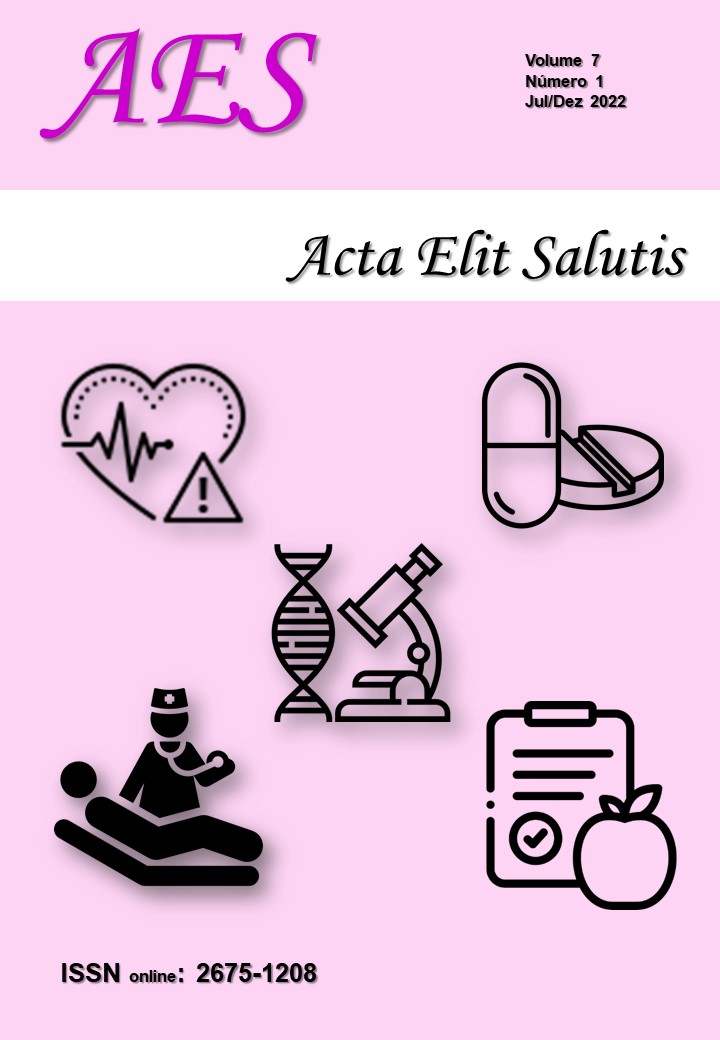Triagem neonatal para imunodeficiência combinada grave (SCID) com quantificação de TREC e KREC usando QRT-PCR: Revisão Sistemática
DOI:
https://doi.org/10.48075/aes.v5i1.28248Resumen
A Imunodeficiência combinada grave (SCID) é uma doença primária letal, quando não empregado tratamento precoce, diagnóstico por meio da análise do círculo de excisão do receptor de células T (TREC) e o círculo de excisão de recombinação kappa (KREC). Por intermédio dos cartões de Guthrie e do papel filtro, são extraídas as informações baseadas no teste molecular de reação em cadeia de polimerase (polymerase chain reaction, PCR), em tempo real (qRT‑PCR), para avaliar simultaneamente as deficiências de células B e T e rastrear as alterações imunológicas. Deste modo, o objetivo desta revisão sistemática foi verificar a sensibilidade e especificidade da utilização de qRT-PCR, em TREC e KREC, no diagnóstico da SCID, conforme publicações nas bases de dados PUBMED e SCIELO, entre 2011 e 2021, resultando em 30 artigos completos, após aplicação da metodologia, em que foi possível concluir que a quantificação de TRECs e KRECs, ao utilizar o teste de qRT-PCR, foi eficiente na detecção das SCIDs e validada em vários países, no entanto, ainda pouco empregada no Brasil, evidenciando baixo diagnóstico de erros inatos da imunidade e alta taxa de mortalidade no primeiro ano de vida.
Descargas
Publicado
Cómo citar
Número
Sección
Licencia
Derechos de autor 2021 Acta Elit Salutis

Esta obra está bajo una licencia internacional Creative Commons Atribución-NoComercial-CompartirIgual 4.0.
Aviso de Direito Autoral Creative Commons
Política para Periódicos de Acesso Livre
Autores que publicam nesta revista concordam com os seguintes termos:
1. Autores mantém os direitos autorais e concedem à revista o direito de primeira publicação, com o trabalho simultaneamente licenciado sob a Licença Creative Commons Attribution que permite o compartilhamento do trabalho com reconhecimento da autoria e publicação inicial nesta revista.2. Autores têm autorização para assumir contratos adicionais separadamente, para distribuição não-exclusiva da versão do trabalho publicada nesta revista (ex.: publicar em repositório institucional ou como capítulo de livro), com reconhecimento de autoria e publicação inicial nesta revista.
3. Autores têm permissão e são estimulados a publicar e distribuir seu trabalho online (ex.: em repositórios institucionais ou na sua página pessoal) a qualquer ponto antes ou durante o processo editorial, já que isso pode gerar alterações produtivas, bem como aumentar o impacto e a citação do trabalho publicado (Veja O Efeito do Acesso Livre).
Licença Creative Commons
Esta obra está licenciada com uma Licença Creative Commons Atribuição-NãoComercial-CompartilhaIgual 4.0 Internacional, o que permite compartilhar, copiar, distribuir, exibir, reproduzir, a totalidade ou partes desde que não tenha objetivo comercial e sejam citados os autores e a fonte.





